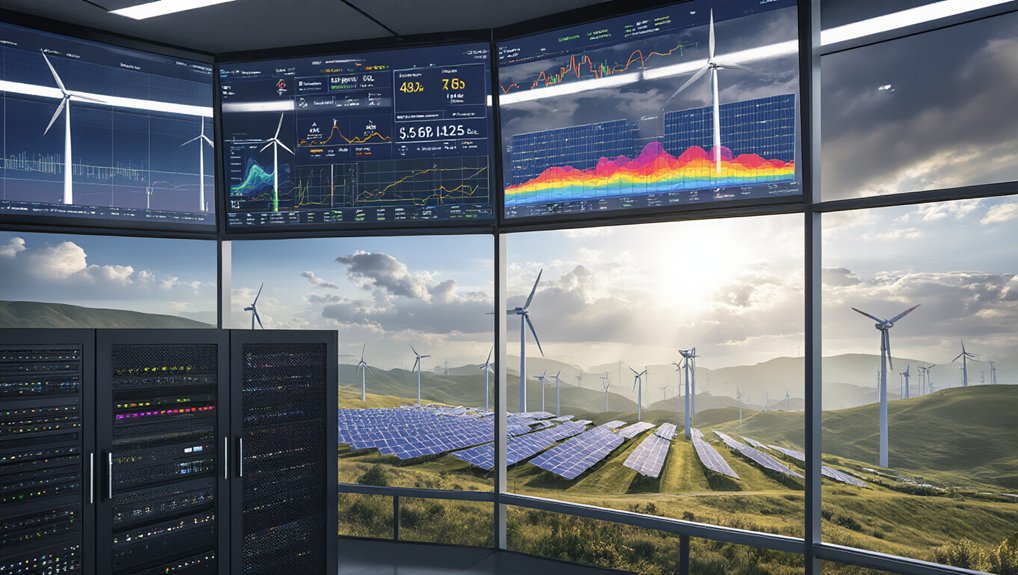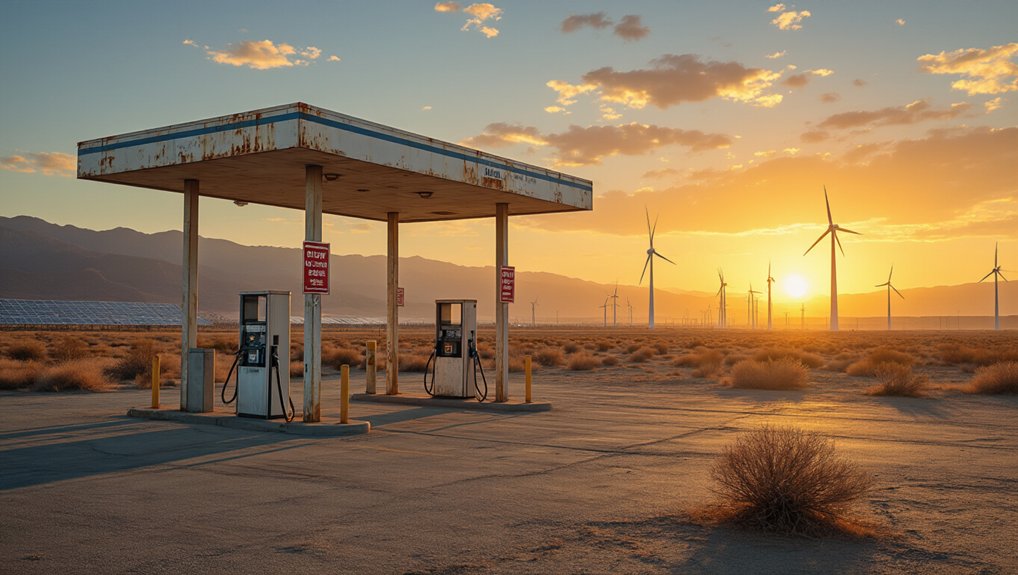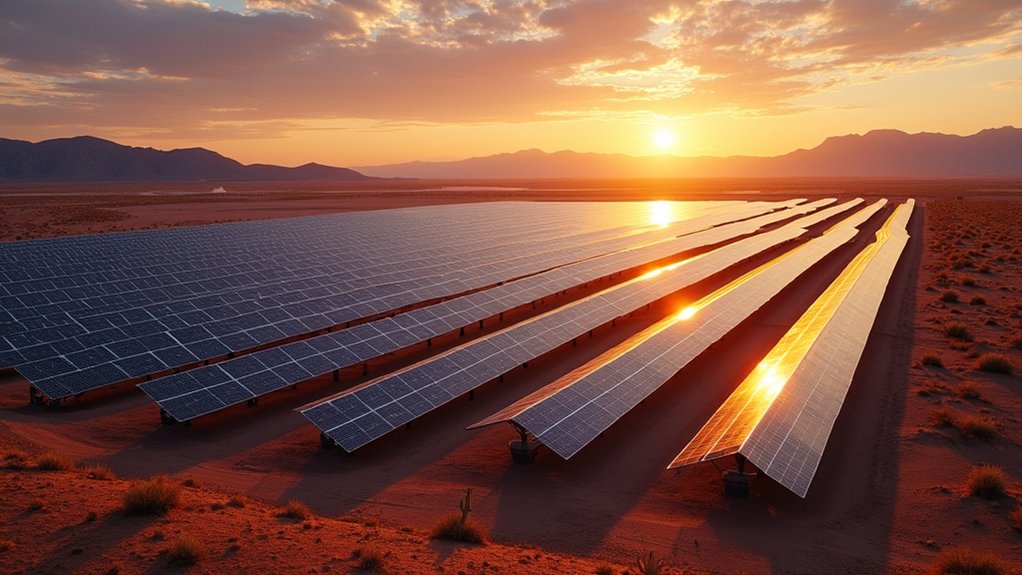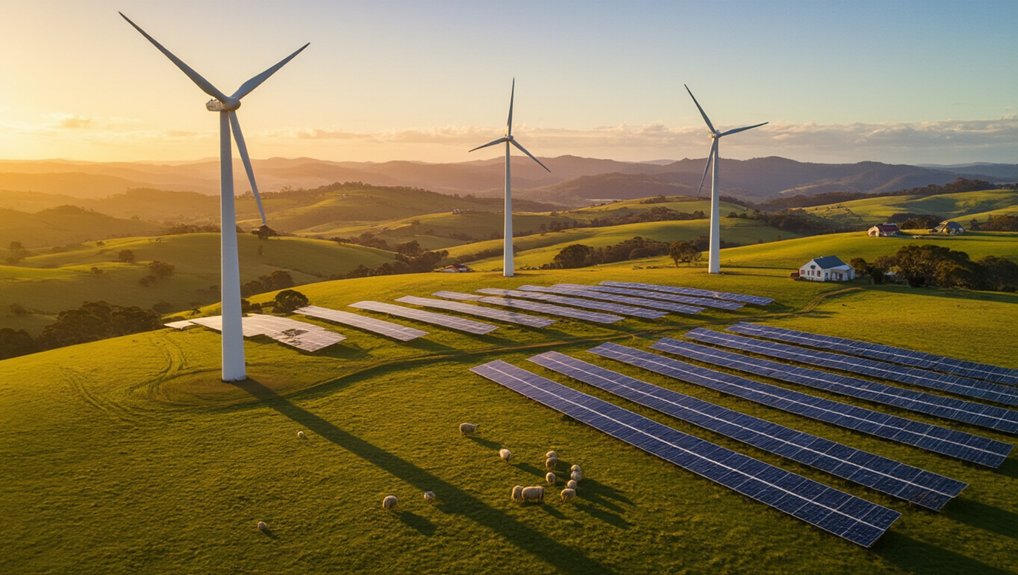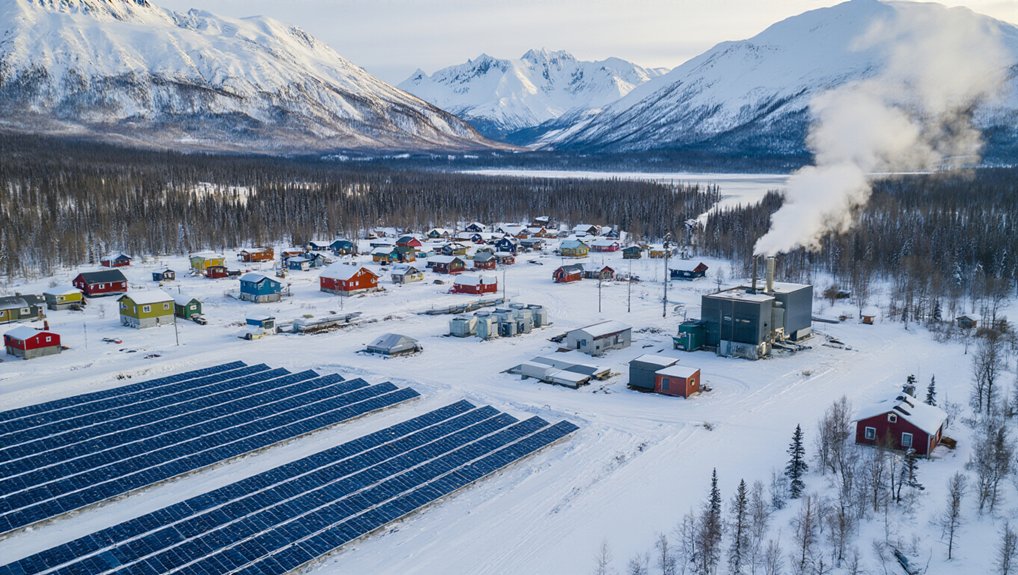While renewable energy has made impressive strides in recent years, it’s artificial intelligence that’s taking wind and solar power to unprecedented heights. Behind the scenes, AI algorithms are crunching massive datasets—weather patterns, satellite imagery, historical outputs—to forecast renewable energy production with uncanny accuracy. This isn’t just tech for tech’s sake. It’s saving serious cash.
Grid operators no longer need to guess when clouds might block solar farms or when wind might die down. AI predicts these fluctuations hours or even days ahead. The result? Less scrambling to buy emergency power. Fewer fossil fuel plants kept running “just in case.” Money saved. Emissions avoided. Pretty neat trick for some fancy math.
AI’s renewable prediction powers mean less emergency scrambling and fewer backup fossil plants running needlessly.
The maintenance game has changed too. Remember when technicians had to physically inspect thousands of solar panels or climb inside massive wind turbines? Those days are numbered. AI systems monitor equipment 24/7, detecting subtle changes in performance that human eyes would miss. A slight vibration pattern in a turbine? Fixed before it becomes catastrophic. Voltage fluctuations across solar arrays? Identified and addressed immediately. By 2025, we’ll see a significant rise in global AI investment for energy efficiency as sustainability regulations tighten worldwide.
Numbers don’t lie. AI-powered predictive maintenance reduces outages by up to 30%. That’s millions in avoided downtime costs. And when equipment is running, it’s running better. Solar efficiency jumps by up to 20% when AI optimizes panel orientation. Wind turbines harvest more energy when algorithms continuously adjust blade angles to changing conditions. Companies like Vestas have demonstrated how AI-driven predictive maintenance significantly improves wind turbine efficiency across their entire fleet.
The market gets it. AI in renewable energy is projected to hit $4.6 billion by 2032. Why? Because it works. It prevents unnecessary curtailment, optimizes storage solutions, and extends equipment lifespans. It makes renewable infrastructure more resilient against increasingly volatile weather patterns. This technology is crucial for achieving experts’ recommendation of 60-80% renewable electricity by 2035.
The green energy transformation isn’t just about installing more panels and turbines. It’s about making them smarter. And in the energy business, smarter equals cheaper. Much cheaper. Who knew algorithms could be so profitable?
References
- https://acropolium.com/blog/artificial-intelligence-and-renewable-energy-a-guide-to-tech-sustainability/
- https://api4.ai/blog/top-ai-trends-in-the-solar-energy-industry-for-2025
- https://intelliarts.com/blog/ai-in-renewable-energy-market-statistics/
- https://www.deloitte.com/us/en/insights/industry/renewable-energy/renewable-energy-industry-outlook.html
- https://www.bcg.com/publications/2025/ai-in-energy-new-strategic-playbook
